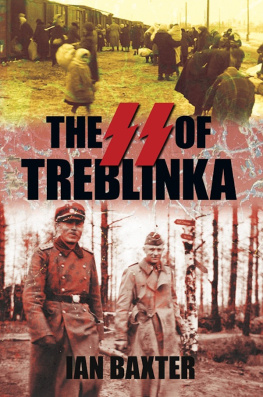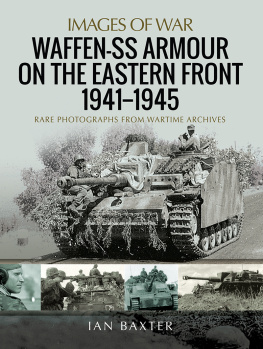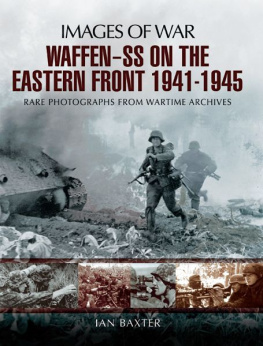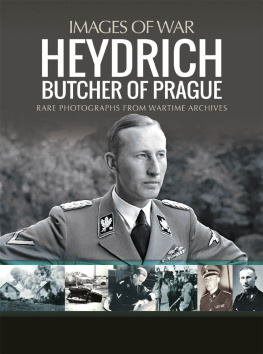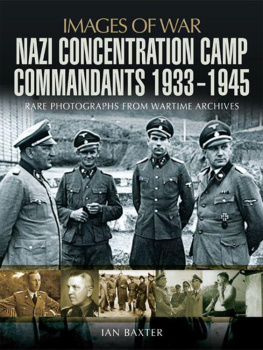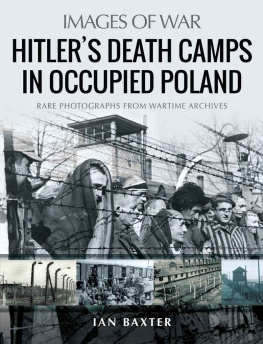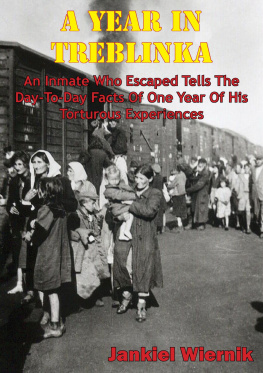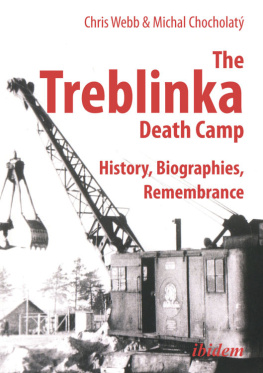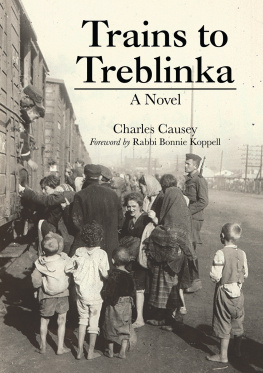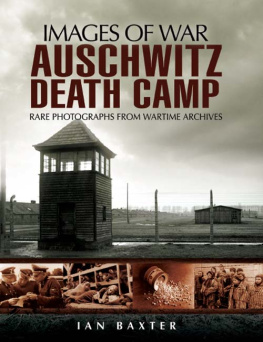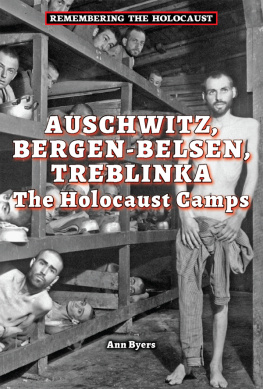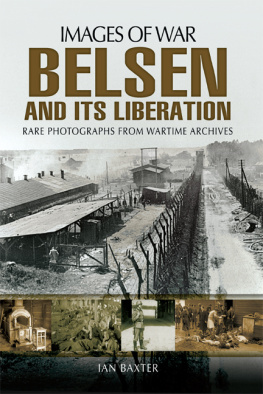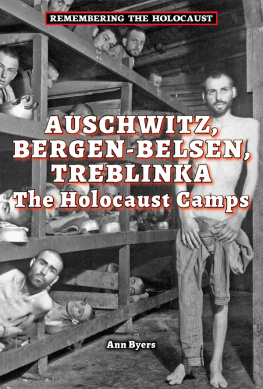

First published in 2010
by Spellmount, an imprint of The History Press
The Mill, Brimscombe Port
Stroud, Gloucestershire, GL5 2QG
www.thehistorypress.co.uk
This ebook edition first published in 2016
All rights reserved
Ian Baxter, 2010
The right of Ian Baxter to be identified as the Author of this work has been asserted in accordance with the Copyrights, Designs and Patents Act 1988.
This ebook is copyright material and must not be copied, reproduced, transferred, distributed, leased, licensed or publicly performed or used in any way except as specifically permitted in writing by the publishers, as allowed under the terms and conditions under which it was purchased or as strictly permitted by applicable copyright law. Any unauthorised distribution or use of this text may be a direct infringement of the authors and publishers rights, and those responsible may be liable in law accordingly
EPUB ISBN 978 0 7509 7980 1
Typesetting and origination by The History Press
eBook converted by Geethik Technologies
If there is ever a generation after us which is so wet and weak-kneed that it does not understand our great task then the whole of National Socialism will have been in vain.
SS-Oberstgruppenfhrer Odilo Globocnik, summer of 1942.
Dedicated to my dear nephew Albie and niece Lilly hoping they ensure that future generations never repeat such inhumanity again.
Contents
Glossary and Abbreviations
Einsatzgruppen | Mobile killing units of the SS, Sipo-SD |
Gau | One of the 42 Nazi Party administrative districts into which Nazi Germany was divided |
Gauleiter | Nazi Party boss in a gau |
Gestapo | Geheime Staatspolizei: state secret police |
Kapo | Privileged prisoner who served as a barracks supervisor/warder or leader of a work detail in a Nazi concentration camp, labour camp or death camp |
Reichsfhrer-SS | Reich Chief of the SS and German Police |
RSHA | Reichssicherheitshauptamt: Reich Main Security Office, formed in late 1939, uniting Gestapo, criminal police, SIPO and SD |
SD | Sicherheitsdienst: security service of the Nazi Party |
Sonderkommando | Special unit of SS |
SS | Schutzstaffel: Guard Detachment created in 1925 as elite Nazi Party bodyguard that evolved into a security and intelligence service with a military arm |
Totenkopf | Totenkopfverbande: Deaths Head, unit of SS deployed to guard concentration camps |
Waffen-SS | Weapon SS: Military arm of the SS from 1939 onwards |
Wehrmacht | German armed forces |
WVHA | Wirtschaffts und Verwaltungshauptamt: SS Economic and Administrative Head Office, responsible for SS economic enterprises and concentration camps from 1942 under the command of Oswald Pohl |
Preface
By the time Treblinka was made fully operational in July 1942, the SS had built a killing factory capable of exterminating hundreds of thousands of people, which could be run by a handful of men.
This book explains and charts the decisions that led to the sophistication of a killing system that delivered families to their deaths by a railway link that stopped only metres from the gas chambers. It shows the individual SS-men during their murderous activities inside the camp, and reveals them relaxing in their barracks or visiting the camp zoo. With the aid of photographs and personal letters it provides a chilling portrayal of the creators and administrators of Treblinka.
Treblinka is perhaps one of the least famous concentration camps, and yet during its short operation some 800,000 Jews were murdered at the camp. Informed by recently discoverd material, some of which has never been published before, this book exposes the inner workings of the camp from the technical challenges of mass murder to the everyday lives of the killers.
The Author
Ian Baxter is a military historian who specialises in German twentieth century military history. He has written more than twenty books including: Wolfs Lair: Inside Hitlers East Prussian HQ, The Eighteen Day Victory March, Panzers In North Africa, The Ardennes Offensive, The Western Campaign, The 12th SS Panzer-Division Hitlerjugend, The Waffen-SS on the Western Front, The Waffen-SS on the Eastern Front, The Red Army at Stalingrad, Elite German Forces of World War II, Armoured Warfare, German Tanks of War, Blitzkrieg, Panzer-Divisions At War, Hitlers Panzers, German Armoured Vehicles of World War Two, Last Two Years of the Waffen-SS At War, German Soldier Uniforms and Insignia, German Guns of the Third Reich, Defeat to Retreat: The Last Years of the German Army At War 19431945, Operation Bagration the Destruction of Army Group Centre, Rommel and the Afrika Korps, The Sixth Army and the Road to Stalingrad, Battle of the Baltics 19441945, The last years of the Panzerwaffe 19431945, The Hitlerjugend 19341945, Women Concentration Camp Guards, and Rudolf Hss, the Creator of Auschwitz. He has written over one hundred journal articles including: Last days of Hitler, Story of the V1 and V2 rocket programme, Secret Aircraft of World War Two, Rommel at Tobruk, Secret British Plans To Assassinate Hitler, SS At Arnhem, Battle Of Caen 1944, Gebirgsjger At War, Panzer Crews, Hitlerjugend Guerrillas, Last Battles in the East, and Battle of Berlin. He has also reviewed numerous military studies for publication, supplied thousands of photographs and important documents to various publishers and film production companies worldwide. He lectures to schools, colleges and universities throughout the United Kingdom and Ireland. He lives in Essex, England.
Introduction
The suffering that Nazi Germany inflicted on the Jews has been well documented. However, material relating to the daily lives of the SS men in the death camps is almost non-existent. After the war, most were of course anxious to cover up their past and were hardly likely to sit down in a prison cell and start recording their memoirs. Even at their trials, when many of the perpetrators were forced to confess to their dreadful actions, very little was revealed about their thoughts and experiences. One exception in this regard was Franz Stangl, the second commandant of the Treblinka death camp. As commandant, Stangl was imprisoned for life. Gitta Sereny, who had covered his trial on behalf of a London newspaper, became fascinated by the prisoner and decided to conduct a series of interviews with him in order to know him better, and to delve into his mind. She also interviewed his wife, his children, his friends, his accomplices, and victims in order to build a portrait of this death camp coordinator.
It was through reading Gitta Serenys book, Into that Darkness; From Mercy Killing to Mass Murder, A Study of Franz Stangl, the Commandant of Treblinka that I first became fascinated by the SS of Treblinka. The book was an appalling insight into the mind of the commandant, and for me its power came from its historical description of a man that was no mere robot blindly following orders, but a character eager to adapt and improvise and efficiently carry out the task he was given. Like many SS-men he found that eventually, as the systematic slaughter of the Jews increased, all consciousness of individual guilt diminished, and murder was simply an administrative procedure. Yet, throughout all these killings many of the key figures remained mysterious figures to me. As a result I decided, after much deliberation, to immerse myself in researching the Treblinka death camp, concentrating not so much on the victims, but those responsible for their murder.
Next page
